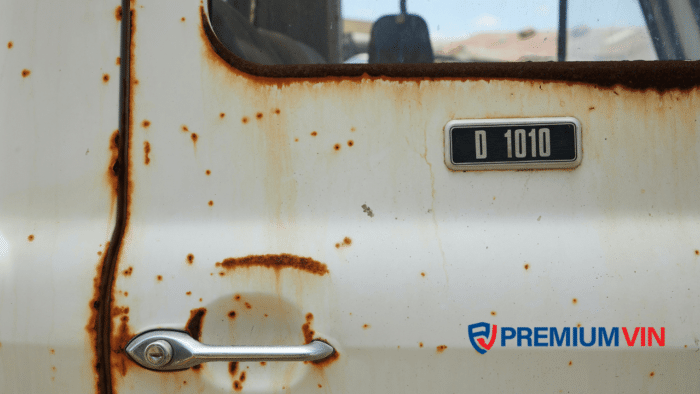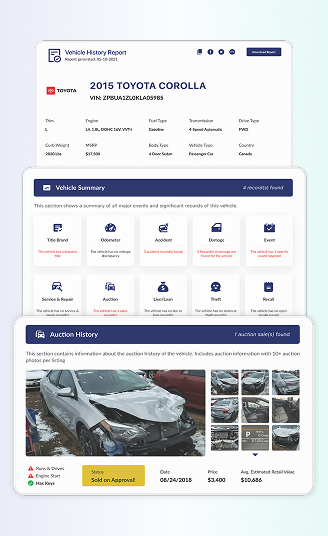Is the hailstone up to 1 inch in size? If it is, then it can cause significant damage to your vehicle. Have you ever wondered how big hailstones have to be before they start causing damage to your beloved vehicle? Well, you’ve come to the right place! In this article, we’ll explore the answer to the burning question: How big does hail have to be to damage a car? So buckle up, grab a cup of coffee, and let’s dive into the world of hailstorms and their impact on automobiles.
READ ALSO: Used Honda CR-V Vs Toyota RAV4 | Side-By-Side Comparison
What is a hailstorm?
Hailstorms are severe weather events characterized by the formation and fall of hailstones, which are solid ice pellets that develop in strong thunderstorms with powerful updrafts. As raindrops are carried upward into the freezing upper levels of the storm, they encounter supercooled water, causing them to freeze and grow in size. According to Wikipedia and several other sources, on April 10, 2001, there was a hailstorm that caused more than $2.0 billion in damages. This is one of the major reasons why you should be cautious about hail and the weather while on the road.
So, how big does hail have to be to damage a car?
Now, let’s get to the heart of the matter. While there is no specific hailstone size that guarantees damage to a vehicle, larger hailstones generally pose a higher risk. Typically, hailstones need to reach a size of at least 1 inch (2.5 cm) in diameter to cause noticeable damage to cars. We recommend not driving as soon as hail is noticed. This way, you reduce the risk of significant vehicle damage and accidents.
A hailstone of 1 inch may appear really small, and you may be tempted to park in a safe corner and walk to your destination instead. Do not do this. If 1 inch is big enough to cause damage to your vehicle, then you can be sure it’s more than enough to harm you.
READ ALSO: How To Check For Rust On A Used Car? Step-by-Step Guide
Factors affecting the amount of damage caused by hail
There are a number of factors that can affect the amount of damage hail can cause, including:
- The size of the hail
- The speed of the hail
- The type of car
- The location of the damage
Generally, hail of 2.5cm (1 inch) causes damage, according to research, but even smaller hail can cause damage if it is traveling at high speeds. For example, hail that is 0.5 inches in diameter can cause damage if it is traveling at 50 mph.
The type of car can also affect the amount of damage hail can cause. Cars with soft roofs, such as convertibles, are more susceptible to hail damage than cars with hard roofs. This is because soft roofs are more likely to dent or crack when hit by hail.
The location of the damage can also affect the amount of damage that hail can cause. Hail damage is most likely to occur on the hood, roof, and windshield of a car. This is because these areas are the most exposed to hail.
Common types of hail damage
Most of the time, when a person is stuck on the road in the middle of a hailstorm or if a vehicle is left unprotected, these are the common types of hail damage the car may experience:
- Dents: Hailstones can create dents on the body of your car, especially on the hood, roof, trunk, and doors. The severity of the dents depends on the size and velocity of the hailstones.
- Cracked or Broken Glass: Larger hailstones can crack or shatter windows, windshields, and mirrors upon impact.
- Paint Damage: Hailstones can chip or scratch the paint on your car’s surface, exposing the underlying metal to the elements and increasing the risk of rust.
Protecting your car from hail damage
If you live in an area that is prone to hail storms, now that you know it is important to take steps to protect your car from hail damage. Here are a few tips:
- Park your car in a garage or under an awning.
- If you don’t have a garage or awning, cover your car with a tarp or blanket.
- If you see a hail storm coming, bring your car inside or move it to a safe location.
By following these tips, you can help protect your car from hail damage and keep yourself safe.
Are you buying a used car?
If you are a used car buyer, you must be careful enough to inspect the vehicle you are interested in for any signs of hail damage. Sometimes, a vehicle may have been damaged and repaired or rebuilt, and you may have no means of identifying hail damage with a visual inspection. This is where a vehicle history report comes in handy.
A vehicle history report is a document that shows the history and records of a vehicle. With PremiumVIN, you can instantly gain access to the vehicle’s past and identify if the vehicle has sustained hail damage, gotten hail titles, and more. Some of the details you can access with a vehicle history report from PremiumVIN include:
- Accident history
- Auction records with more than 10 photos
- Sales history
- Damage records
- Warranty information
- OEM maintenance schedules
- Service history
- Vehicle specifications
- Lien and loan records
- Open recalls
- Theft records
- Ownership history
- Title-brand records, and more.
How big does hail have to be to damage a car? Don’t purchase a vehicle with hail damage. Visit our VIN check page to verify the condition of the vehicle you are interested in.
Now that you know how big hail has to be to damage a car (1 inch), you can better prepare for hailstorms and take the necessary precautions to protect your vehicle. Remember, larger hailstones increase the risk of damage, so it’s crucial to find safe shelter during severe weather.
READ ALSO: Is The Used Car Market Going To Crash In 2023? Truth You Should Know
Frequently Asked Questions
How much hail causes damage?
Hailstones need to reach a certain size to cause noticeable damage to vehicles. Typically, hailstones need to be at least 1 inch (2.5 cm) in diameter to cause damage to cars. However, it’s important to note that the severity of the damage can vary based on the size, velocity, and density of the hailstones.
Does pea-sized hail cause damage?
Pea-sized hail, which is approximately 0.25 inches (0.6 cm) in diameter, is generally considered to be too small to cause significant damage to vehicles. While it may create minor surface blemishes or dings in softer materials, such as plastic trim or softer paint finishes, it is unlikely to cause major harm to a well-maintained vehicle.
How big is 2-inch hail?
Hail that measures 2 inches (5 cm) in diameter is considered a large hailstone. It is roughly the size of a golf ball. Hailstones of this size can cause significant damage to vehicles, including dents, cracked windshields, and paint chipping. It is advisable to take shelter or find covered parking during hail storms of this magnitude.
What’s the biggest hail ever?
The largest recorded hailstone in terms of diameter was 8 inches (20 cm) and was measured in Vivian, South Dakota, USA, on July 23, 2010. This enormous hailstone weighed approximately 1 pound (0.45 kg). While hail of this size is extremely rare, it can cause extensive damage to vehicles, structures, and crops.
Run a VIN Check
More From
Adewale Peter

Commercial vehicle vs passenger vehicle | vehicle definitions
A A non-commercial vehicle is a vehicle whose use is not intended for money-making purposes, such as carrying goods or passengers for a fare. The most common types of non-commercial

What is a Maintenance Service Interval? | Complete Vehicle Guide
A maintenance service interval is the crucial total time between each vehicle service and inspection. Regular intervals are vital to maintaining your vehicle’s performance and longevity. This interval can be

Most Reliable Jeep Models | Which Wrangler to Trust?
Jeeps are generally great brands of SUVs, with unique on- and off-road capacity. This article, offering a comprehensive overview, will closely examine various Jeep models and their reliability scores. This

Compact vs. Subcompact SUV | Key Differences You Need to Know
Here is the significant difference between a compact SUV and a subcompact SUV: In essence, the main distinction is slightly in the dimension, capacity and even traits of each of
Popular Articles

Commercial vehicle vs passenger vehicle | vehicle definitions
A A non-commercial vehicle is a vehicle whose use is not intended for money-making purposes, such as carrying goods or passengers for a fare. The most common types of non-commercial

What is a Maintenance Service Interval? | Complete Vehicle Guide
A maintenance service interval is the crucial total time between each vehicle service and inspection. Regular intervals are vital to maintaining your vehicle’s performance and longevity. This interval can be

Most Reliable Jeep Models | Which Wrangler to Trust?
Jeeps are generally great brands of SUVs, with unique on- and off-road capacity. This article, offering a comprehensive overview, will closely examine various Jeep models and their reliability scores. This

Compact vs. Subcompact SUV | Key Differences You Need to Know
Here is the significant difference between a compact SUV and a subcompact SUV: In essence, the main distinction is slightly in the dimension, capacity and even traits of each of



